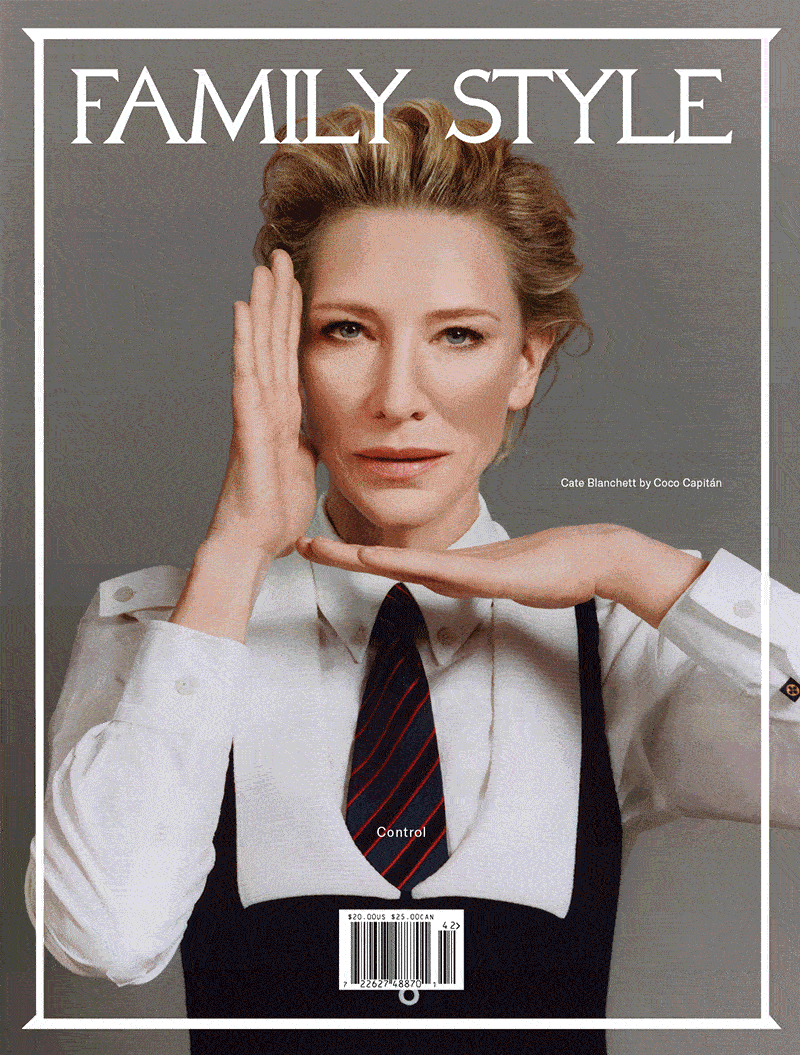.avif)
Image courtesy of Meredith Hayden.
Meredith Hayden’s apartment, as the story often goes, is stunning and lovely. The couch is white. The shelves abutting the television, on which the 28-year-old watches Martha Stewart Living on a loop, contain a ceramic artichoke, a rattan lamp, and Ginori serveware. The windows are floor-to-ceiling. The view is expansive, offering a Tom Wolfeian “Masters of the Universe” panorama of so many buildings, you forget which direction you’re looking. The apartment itself sits within a tooth-colored high-rise that declares itself against the skyline, in a waterfront part of Brooklyn that seems like another city entirely. It’s an apartment that suggests it would be gratuitous to actually board one of the leisure-barges drifting by, because you can see more from up here.
“I’m not the same person I was last December,” says Hayden. Technically, she is talking about the draft of her forthcoming debut cookbook, sitting in front of her beside a pen she’s nearly depleted. Technically, I’m here to help test through one of its recipes: a melty short rib bolognese that drapes itself over al dente noodles like it’s had an exhausting day.
But Hayden might as well be referring to the molting that is so common when one achieves the new American dream of figuring out how to go viral, over and over again. And the agony over what to do next.
Like most big names in new media, Hayden has no neat definition. She has followers, a lot of them. Three point four million across Instagram and TikTok, and more than 96,000 Substack subscribers. Known to most as Wishbone Kitchen, she was an architect of that class of TikTok cinema in which a relatable creator cooks aesthetically pleasing, aspirational meals for clients who are doing better—in several certain senses—than you or I. She was the private chef in the Hamptons, a new subgenre of chatelaine, one with a touch of Downton Abbey: the woman who looks at home in a big house, but who is fundamentally there on payroll. The laborer who blends seamlessly into luxury, with the suggestion of one day achieving it.
A year has passed since Hayden left the fancy private chef job that catapulted her self-funded media company, as she calls it. In the months since, she has finished a draft of her cookbook—think approachable, comforting, company-worthy seasonal fare—thrown a new focus behind her cooking instruction and lifestyle videos, and plotted her next moves. Now, Hayden is re-testing every single recipe in the cookbook, due to be published next May. Actually, she’s re-testing every single recipe again, because she has this fear that some minor figure or explanation will be wrong, and it will ruin someone else's job, dinner, or grocery budget for the week.
So, we’re making the short rib bolognese. Well, she is. I’m sitting at the counter, thinking about the things that catalyzed Hayden’s conquest of the Internet. Which in that moment means idly flipping through her manuscript, covered in red penned-words with all the neat curviness of cool girl handwriting, and attempting to suss out where that one spot is. Every influencer has it in their home: the corner where natural light converges with walls and reflective surfaces to create, basically, heavenly beams of sunshine at a specific time of day. Before I can ask to see it, though, Hayden hauls out three large bags of dried noodles.
“Pick,” she tells me. My options are gnocchetti sardi, irregularly shaped ribbed shells; macaroni, like rigatoni but less wide; or gigli toscani, larger corkscrews of loose frill. I suggest the third shape, realizing that as I wait for her agreement, I really do want her to approve of my choice. When she does, I exhale. I suppose that’s a part of Hayden’s effect: She has the power to make you want her to like you, even if you’re there to interrogate her.
She pours us two Diet Cokes and swirls them simultaneously with glass straws, one in each hand. As you might expect, the Diet Cokes are just crispier at Hayden’s apartment. Perhaps it’s because of how she serves them: each poured over ice in a tall glass with thin sides and a straw that clinks appealing as she stirs the liquid like a potion in a beaker.
More likely, it’s because to drink a Diet Coke in the presence of Hayden is to recall a brittle morning fizzing with possibility as she cracked one at dawn. In the early days of her social media ascendancy, Hayden would take a sip before inviting us to trail along digitally for her 17-hour Hamptons work-shift. On her first day, her then-boss asked Hayden what she wanted out of the job; she launched into a spiel about cookbooks, and working in magazines, and teaching lots of people to cook before he politely interrupted. “He was like, ‘No, what hours do you want for this job’,” she tells me, laughing a laugh that manages to be both self-deprecating and intoxicatingly confident. But even then, Hayden was a person who knew what she wanted, even if she would have to carve out a basically uncharted path to get it. She glides across the narrow kitchen in a chunky navy and white knit and oversized jeans, and she places the bowls of pasta on the counter beside the cookbook pages, her laptop, and the largest water bottle I’ve ever seen, in a color that matches her eyes. And we dig in.





.avif)



.avif)

